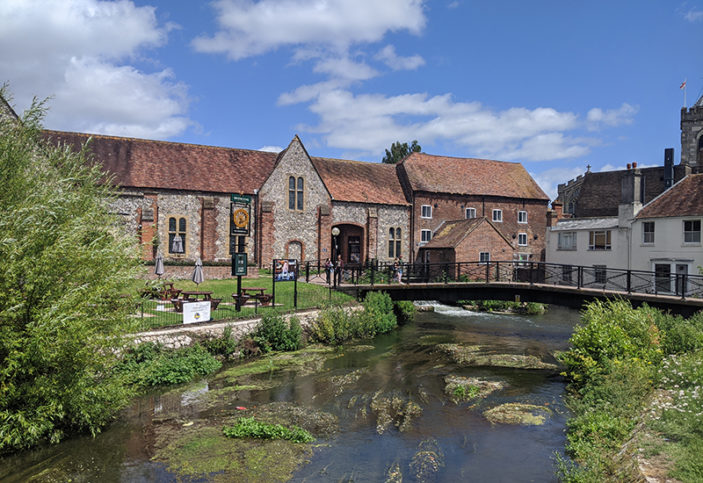
If there are two things I’ve missed most during months of lockdown in London, it’s pubs and the sea. Fortunately, the former – along with restaurants, cafes and self-contained accommodation – reopened their doors to customers on Saturday 4th July across most of the country, with a return to business caveated by strict health measures.
My housemates and I resolve to take an overnight road trip to reacquaint ourselves with some simple pleasures of a weekend escape (just with added social distancing). We promptly book a property on Airbnb in the seaside town of Weymouth, staying only Sunday night and returning Monday.
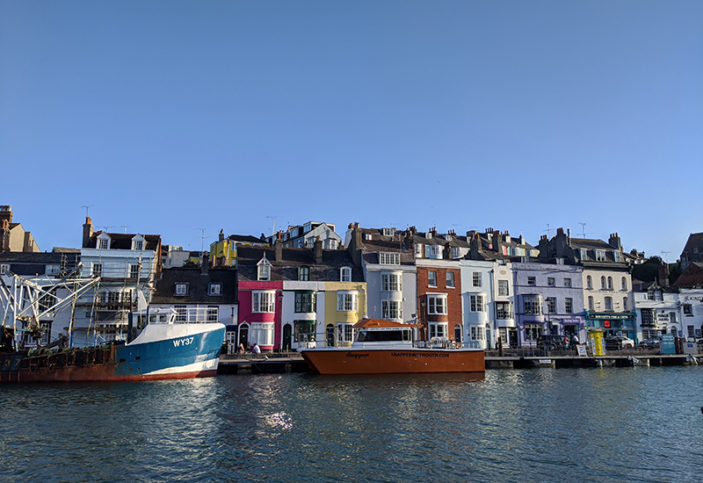
Why Sunday? We figure shifting the typical weekend stay back a day will help us avoid large numbers of others keen to sate months of pent up wanderlust. Whether it’s the right choice or the cooler weather naturally dissuades day-trippers, the roads are largely clear and the crowds are largely non-existent.
Once on the freeway, heading west out of the capital, the sun pops out and it’s easy driving. We opt to skip the monument to the sealing of the Magna Carta in Runnymede, just past Heathrow, keeping our sights set on Salisbury where we can see the real deal.
As with meeting up with friends for the first time post-lockdown, leaving the city feels both alien and completely normal. Rolling fields and open space after any time spent in the density of London are a welcome sight; more so after months of having a world compacted to a few kilometres.
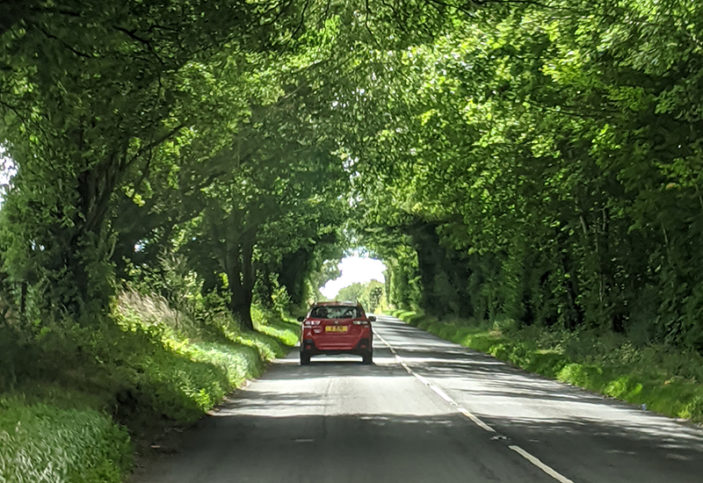
By chance, on the approach to Salisbury we take a wrong turn which brings us right past Stonehenge – yes, you can see an iconic UK sight, fairly close up, without leaving your car or the road. Score one for social distancing tourism.
Even with such lazy viewing, it’s an impressive monument. This is also one of the only times we strike traffic on the trip as there seems to be more cars on the road – slowing down to take in the view – than people circling the icon on foot.
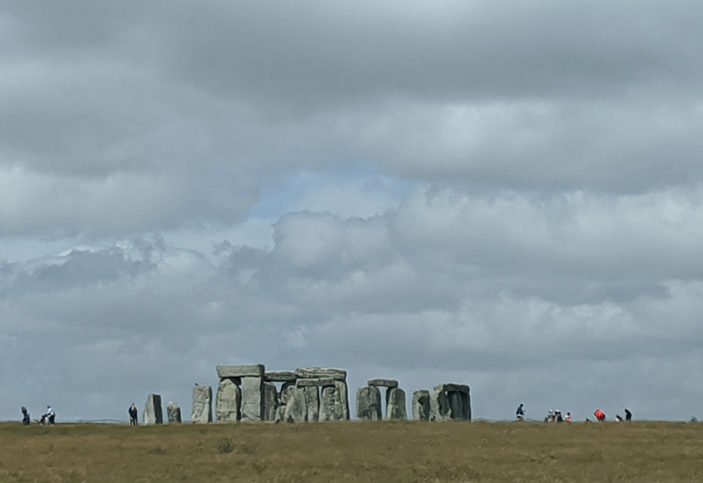
With the car parked (for free on a Sunday) in a near-empty Salisbury lot, we take a brisk walk through the town centre. On any other non-pandemic-affected summer day, this hub would be buzzing; this early afternoon, it’s only pleasantly populated. One of the most striking differences with London is the lack of face masks, although many people still make the familiar furtive attempts to keep their distance when passing on the footpath.

The local Burger King, along with many shops and restaurants, is shut, but pubs and a local milkshake shop are welcoming customers. For lunch, we land on The Haunch of Venison, a charming 14th century tavern where age is betrayed by numerous creaks and groans. It’s still empty enough for us to have an entire upstairs room to ourselves. Score two for social distancing tourism.
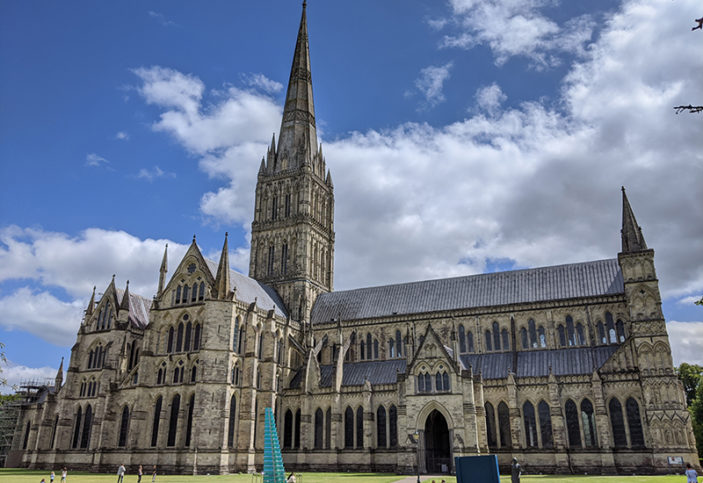
The view next door validates our choice, taking in nearby St Thomas & St Edmunds Church and gardens. The sizable and delicious Sunday roast is like any other, except for the masked waiter and frequent hand sanitising.
Vibrant Salisbury Cathedral nearby is so calm it feels like a village green – park security guard aside – with only a handful of tourists taking photos and locals relaxing on the lawn. Although our plans to see the copy of the Magna Carta are unfortunately scotched; the cathedral, while open to visitors again, is closed on Sundays.
Back on the road, we potter through the thatch-roofed villages and rolling hills of Cranbourne Chase AONB before turning south. The first glimpse of the sea as the hills parted above the coast wakes us from our post-roast stupor.
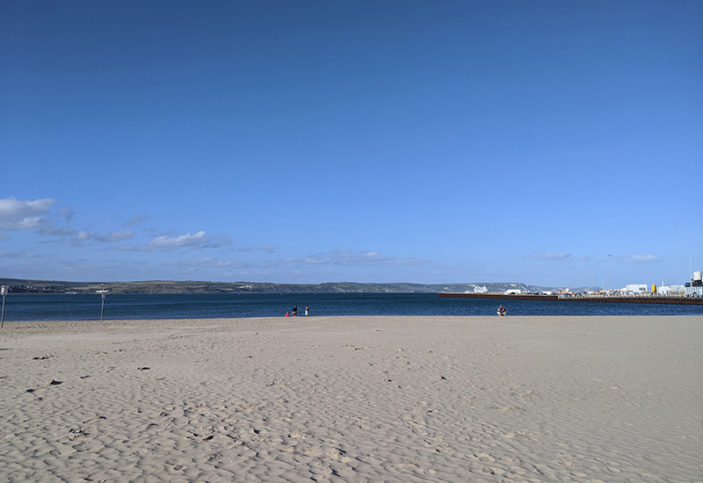
It’s not until I feel the soft Weymouth sand under my feet, and the energising embrace of the water as I dive in, that I realise how much I’d missed this. While it’s windy and late in the day, the beach on which the town sits is surprisingly empty, save for a few families taking a walk and two horses and riders doing a photoshoot. Score three for social distancing tourism.
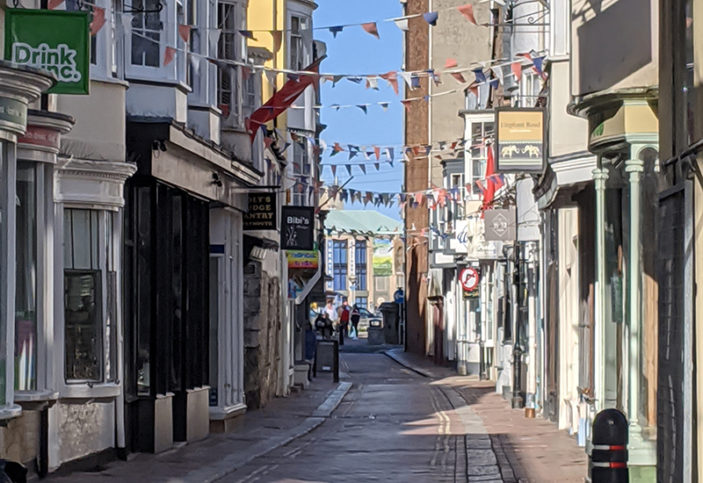
The nearby town centre is largely shut, more than likely an unfortunate effect of a lack of visitors than it being a Sunday evening. It’s sobering to see the impact of a lack of tourism on what would otherwise be a bustling seaside town in the summer, especially one which relies on the economic stimulus such a seasonal rush brings.
A little back from the beach though, on the harbour, the town is buzzing with fish and chip shops and bars open and locals scattered in front of the pastel coloured buildings that line the water. The relaxed atmosphere and smell of salt in the air is topped off by a crispy mackerel bap and chips.

While less traffic and fewer planes during lockdown meant London’s volume levels had dropped, it was nothing compared to the sweet, almost dead quiet that night from our little property just two doors down from the harbour.
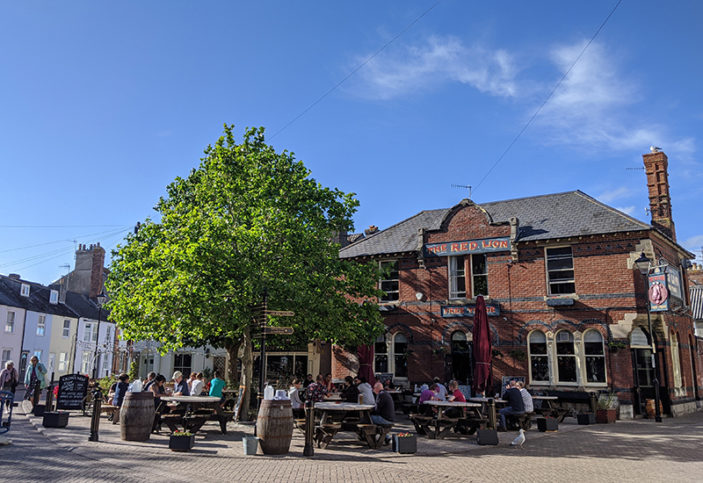
After months of sleeping in the same bed, it’s both thrilling and slightly disorienting to be in another house after dark. Regardless, it’s largely the same as any other Airbnb stay, the only difference being that the next morning we have to place all the bed sheets and used towels in the laundry basket and take out our rubbish.
Three cafes on a little square nearby are open with perhaps two tables (including ours) populated. Great for social distancing and speedy service, but, again, not for local business.
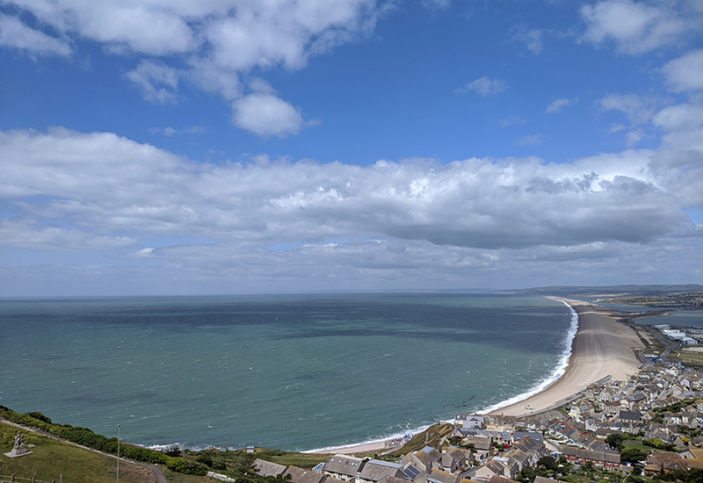
Steeled for the day with tea and scones, we drive south up onto the Isle of Portland for a welcome blast of fresh air, 270 degrees of sparkling sea and Pulpit Rock, a former natural stone arch cut away as part of local quarrying.
This morning the large slab of “open bible” leaning against the square pulpit stands largely ignored by fishers making use of the platform above the water.
Back north then east, we drive onto the Jurassic Coast, a picturesque stretch of rocky cliffs, beaches and inlets fringed by farmland and villages. We head for Durdle Door, and for the second time on our getaway, encounter a decent number of travellers – although conceivably a lot less than would be here on a warm, sunny day.

The one-way walk down to the beach feels a little long, but when it drops us down to the coast the unforgettable views are a sweet reward. A hairy cliff top path provides a glowing vista with the limestone archway jutting into the vast expanse of Weymouth Bay behind it. Six idling cruise ships with seemingly nothing to do these days but bob in the water add a touch of the surreal and another reminder of the impacts of the pandemic.
Luckily, the beach isn’t too busy and the chilly water even less so (not that that stops your intrepid writer after months of not being able to swim in the sea).

A ten minute drive – or a half hour walk along the coast – takes us to Lulworth Cove, a small, satisfyingly circular inlet fringed by a beach and a charming little village rolling down the hill to meet it. After heavy rain, the cliffs along here can give up their fossils, like the spiral ammonite shells. The sea creatures we come across though are far more recently deceased and sandwiched between burger buns rather than chalk.
Although we’re tempted to keep exploring the rest of the coastline, a three hour drive back to London lies ahead, and we don’t want to be back too late. Besides, there has been more than enough to pack into 48 hours; to have taken in the sea, Stonehenge, Salisbury Cathedral and a pub lunch, at a pretty leisurely pace, is a great escape from lockdown-London and enough to ease our travel pangs. For now.
All photos by Andrew Campbell.
